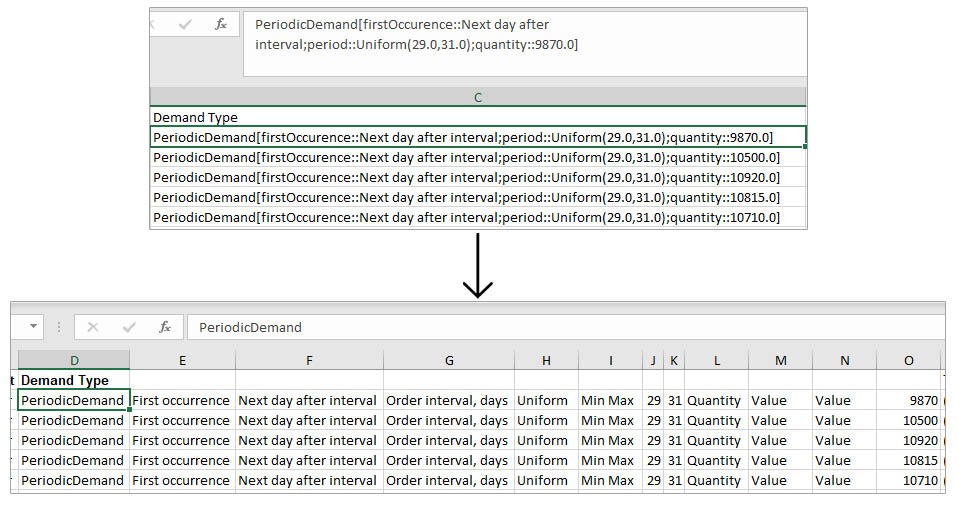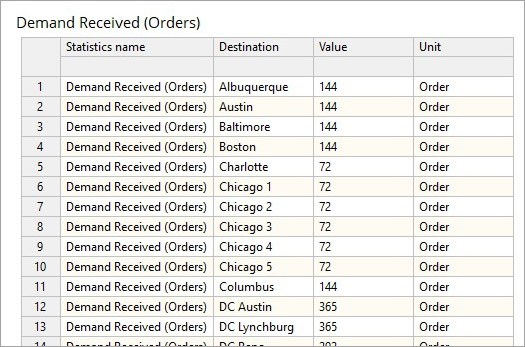
anyLogistix 2.13 has been released with major updates that include improved data import and export capabilities and speeded-up performance.
You can download the latest version by clicking ‘Check for Updates’ in the Help menu, or by visiting the downloads page.
Let’s see what it has to offer!
Simpler Excel data import file format. The structure is more like a typical database format to help data preparation and speed-up the workflow with anyLogistix. The same goes for data exports: exported experiment data is now easier to process, store, and analyze.
Here is an example of how it helps with the Demand table. A complex format where all the demand logic goes into one cell is replaced with an easier-to-manage data structure where each parameter occupies a separate Excel table cell. This format works more easily with Excel macros and other methods of data processing.

Change in Excel template format.
Larger scenarios support. 1,048,576. Any guess what this number could mean? Actually, this is the maximum number of rows an Excel table can have. Previously, if you needed to run an ALX scenario with more records, as is the case for some larger models, it was inconvenient due to this Excel limitation. Now this limit is removed: long lists are spread over multiple spreadsheets.
Speedier I/O. Large datasets now import and export faster. This improvement makes a significant difference for operators of very large networks. The update saves a lot of time for users who make frequent changes to large data sets that must be re-imported after each change.

Demand Received (Orders) by destinations.
To try anyLogistix for free, download anyLogistix PLE.
You can learn more about anyLogistix and its capabilities from our webinar series and demo videos. Alternatively, stay up to date with anyLogistix videos by subscribing to our YouTube channel.